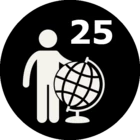another CityGML question!
is there a possibility to write CityGML 2.0.0 already?
I'm trying to model the buildings at LoD0, as lod0FootPrint, but this citygml_lod_name is not valid!
"The 'lod20FootPrint' citygml_lod_name trait is invalid for 'Building' features, the geometry will be ignored, valid values are {lod1MultiSurface, lod1Solid, lod1TerrainIntersection, lod2MultiCurve, lod2MultiSurface, lod2Solid, lod2TerrainIntersection, lod3MultiCurve, lod3MultiSurface, lod3Solid, lod3TerrainIntersection, lod4MultiCurve, lod4MultiSurface, lod4Solid, lod4TerrainIntersection}."
Can I add this possibility manually, or should I wait for a new (updated) cityGMLwriter?
(next question I will ask, will be concerning the modelling of tunnels and bridges ;))
with kind regards,
Ine De Cubber





